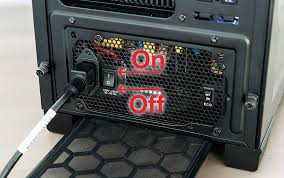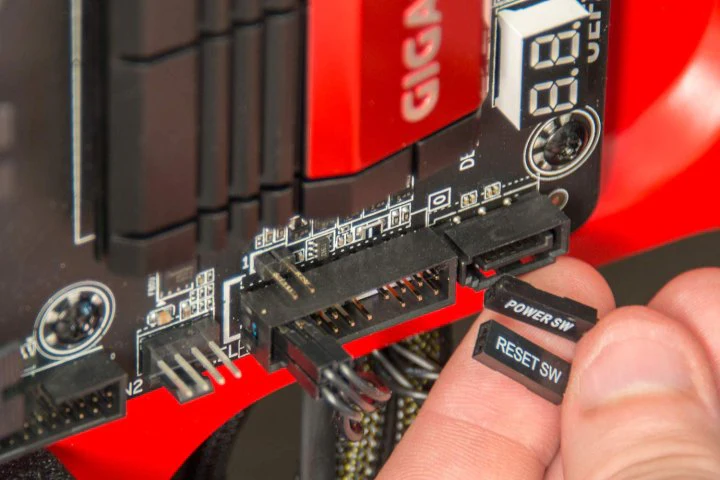Introduction
Is your pc not turning on, computer not responding at all? Your technology not functioning can be very irritating, especially today, when most of our daily activities, work, and leisure depend on technology. We’ve all been there, from encountering a black screen to your unresponsive power button. Take a deep breath, don’t panic. The issues this problem stems from could be common, and there is a high probability that they are easy to fix. In this blog, I will help you understand the best troubleshooting techniques to recover your computer. Let’s dive into the solutions and get your computer running again.
Common Reasons for a PC Not Turning On

Understanding why your computer won’t turn on doesn’t need to be difficult. Issues with the power supply are prevalent. Components require power; without a stable or sufficient supply, even the best components on your pc will not turn on and will fail to function. Another common issue is loose connections. The cables can get disconnected while shifting your computer’s position, maintaining it, or even during everyday use.
Overheating can occur when components can’t properly cool down due to dust clogging fans. This may lead to shutdowns or failures to start altogether. In the event of the complete failure of all your computer components, your computer will stop switching on. Your computer will likely need extensive troubleshooting to identify the functioning components in such scenarios. Familiarizing yourself with the potential causes will help you tackle the bothersome problem efficiently instead of aimless troubleshooting and time wastage.
Step-by-Step Guide to Troubleshooting
Every tech-savvy person and professional dreads it when a computer fails to boot; it can be vexing and painstaking. A few steps can be taken, like checking the computer’s power gauge. Check whether the power cord is properly and securely connected to the wall socket and the computer.
Make sure the power switch is turned on. Check if there is power to the computer. Check for any lights. Is the fan spinning? Also, check if the power outlet and power strip work.
In a scenario with a power light illuminated or some signs of life, paying attention to sounds like beeping, clicking, or whirring is essential. Adding certain things to the mix can indeed paint a picture of the computer booting correctly.
In the case where the computer does not power up, it is also recommended to reset all of the hardware. Not connecting the hardware for some time might enable a reset of crucial connections at various levels. Last but not least, it is important to document all steps taken to resolve the issue. A log helps visualize attempts and spot recurring patterns, therefore unlocking a series of unresolved issues.
Basic Fixes: Checking Power pc not turning on
PC not turning on or starting up? To solve any problem, you always start by identifying the basics. You should check both the outlet and the power cable. Confirm that the power cable is correctly plugged into the computer device and the wall power socket. Also, check the cable. It should be free of any damage. A disconnected, damaged, or worn-out cable will obstruct the power supply to the computer. If these do not work, consider changing the outlet or power cord.
Damaged surge protectors and power strips are notorious for slowing down computer systems. You should ensure that these are in perfect working condition. Plugging the computer directly into the wall socket without any power strips in between is always a great idea. Windows and indicator lights located on the laptop or computer can provide valuable information regarding receiving power. Simple checks save time and computer users a lot of frustration; in the long run, computer users won’t have to dive deeper into troubleshooting steps.
Advanced Fixes: Checking Hardware pc not turning on
If your pc not turning on still won’t power on after performing basic troubleshooting, it may be time to dig deeper into the hardware problems. Begin with the power supply unit (PSU). Check if there are any loose connections. Also, make sure the PSU is working by checking if it is whirling faintly. Untighten the case to look for loose cables or components. RAM sticks are also known to become loose over time, and reseating them often fixes the problem. Ensure that the RAM sticks cannot be removed easily, as they should be secure.
Make sure to also check the motherboard. Any cuts or burnt spots can indicate a problem. If you have spare RAM sticks or graphics cards, you can temporarily replace them to test if the issue lies with your motherboard. Never ignore overheating components, GPUs, and CPUs. Performance has a direct relationship with dust; therefore, removing dust build-up can restore shutdown problems.
Troubleshooting Specific Issues (e.g. Blue Screen of Death)
Getting a Blue Screen of Death on your Windows pc not turning on is one of the most alarming computer issues, especially when your computer won’t boot up. These screen errors mostly occur due to software conflicts, a particular driver issue, or problems with the pc not turning on hardware.
If a BSOD shows up, always remember to note the error code displayed on your screen. This is crucial information that should accompany your search and will make it easier to troubleshoot the issue. You can look up how to resolve issues based on the codes you input.
Trying to boot your computer in Safe Mode could also help in isolating the issue. Restart your computer and start pressing F8 until the advanced boot options menu shows up. You can stop at Safe Mode, and it will let you know if your computer is able to start without crashing.
If your computer can boot up without crashing, then there is a high chance that the issue is due to driver updates or installed programs. Remember to remove any recent updates or new applications that were installed along with the drivers, and you should be fine. Additionally, you can run a memory diagnostic test, which can identify issues with your pc not turning on, RAM that could be causing the error, and help identify the problematic hardware component.
Prevention Tips to Avoid Future Problems
In maintaining a pc not turning on, regular checkups ensure everything runs butter smooth. One way is to schedule laser-focused software updates. With every update comes additional online security protection, competing against the ever-growing list of digital diseases.
Investing in a good surge protector is also highly encouraged. Computers suffer from a multitude of diseases. Power surges are among the worst. They can burn internal components, turning the pc not turning on into a hardware raisin. Neglecting the physical appearance of the computer also comes at a price. Accumulation of dust can lead to overheating, a problem heavily correlated to premature hardware failure. Regular cleaning of PC vents and fans guarantees top hardware airflow.
Loss of data can come from unexpected PC shutdowns or regular hardware breakdowns. Investing in reliable data backup guarantees peace of mind during the worst of the worst. Hours of research on new software and hardware, paired with careful installation, guarantee the best rigs possible. If enough attention is not put towards assessing compatibility, problems bordering on catastrophic levels are bound to spawn in the foreseeable future.
Conclusion pc not turning on
It can be infuriating to encounter a PC that won’t turn on at all. Despite that, understanding the common reasons behind a PC not turning on, along with our step-by-step guide, can simplify the process, allowing you to fix the PC yourself. Make sure to start with a power supply check, along with a connection check, before proceeding with advanced checks on the hardware.
Identifying potential problems is especially critical when dealing with specific problems, so if you know you are bound to encounter a Blue Screen of Death, detecting the issues early on can save you a lot of time later. Regular maintenance is extremely important, making sure that a system is well looked after now allows the computer to run properly for a longer time in the future.
If you have exhausted all potential avenues, seeking professional assistance is not something you should be hesitant about. Staying informed about potential problems is a fundamental part of being a computer owner. Make sure to keep the computer problem-solving tips at hand for when you feel they are needed the most!

 Unusual Award N.13: A Tribute to Distinctive Proportions
Unusual Award N.13: A Tribute to Distinctive Proportions  Elisabeth Moss Weight Gain Inspiring Journey Breaking Hollywood Stereotypes
Elisabeth Moss Weight Gain Inspiring Journey Breaking Hollywood Stereotypes  Lance Stephenson Net Worth Impressive Rise Despite an NBA Journeyman Career
Lance Stephenson Net Worth Impressive Rise Despite an NBA Journeyman Career  Did rudy and elaine break up Heartbreaking News or Just Rumors?
Did rudy and elaine break up Heartbreaking News or Just Rumors?  wnl medical abbreviation Powerful and Positive Role in Medical Records
wnl medical abbreviation Powerful and Positive Role in Medical Records  noah jupe movies and tv shows: Inspiring Story of His Career, Age, Net Worth, and Success
noah jupe movies and tv shows: Inspiring Story of His Career, Age, Net Worth, and Success